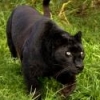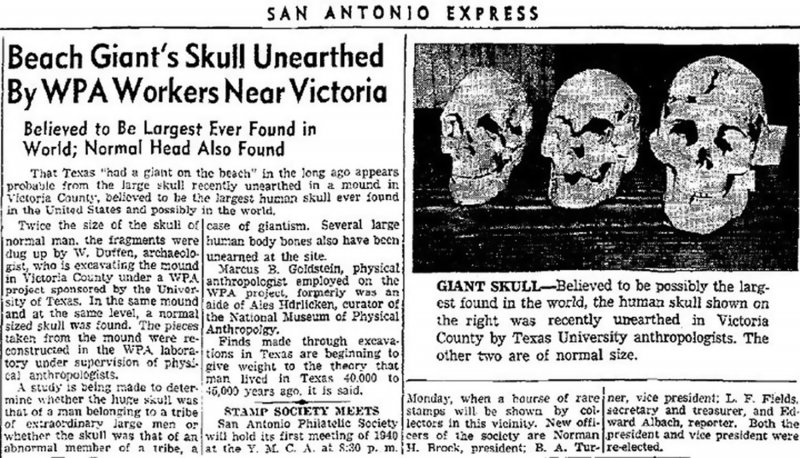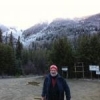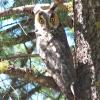Leaderboard
Popular Content
Showing content with the highest reputation on 02/18/2017 in all areas
-
I can address part of that. It's more reflective of specific critter habits when sick or dying than it is reflective of their relative numbers. I grew up in a black bear preserve, "family central" was there since the 1930s, I spent periods there off and on up 'til '73 when we moved there permanently to take care of the older generations. I was there constantly for a bit over 9 years, then spent holidays and summers there through 5 years of college, and still go back hunting and fishing. In other words, pretty deep saturation in the sight. Despite it being a bear preserve, despite seeing a few to a dozen bears a day in some seasons (and they do not truly hibernate there, they get up every few weeks and mosey around looking for meals ... and will not return to "sleep" as long as there is a food source), I never found a single black bear carcass or bone without a bullet hole to account for it. NOT ONE. Cougar skeletal remains, despite there being vastly fewer of them, were not particularly unusual to find. Same with bobcats and many of the weasels. Deer and elk ... common as grass pretty nearly. Unless Washington DFW is vastly more attuned than Oregon DFW, I don't think they're going to have that information. Some road departments MIGHT have data on what was cleaned up but it would be horribly skewed, useful if they get a $1 per deer or something but not reflective of what happens in the wild. MIB1 point
-
I find it doubtful that a coroner would not be able to differentiate between a homo sapien and another species. Cro Magnon and Neanderthal bones go in different bone boxes all the time. I think it would resemble the Kennewick man find. People call Cops, Cops call coroner, coroner calls university, tribe gets involved.1 point
-
If you want the answers to this, they are available via some of the habituators. They're in a position to watch specific individuals over time. People reporting single road crossings are not. Investigators of such crossings are, a the very very best, GUESSING that two different people saw the same individual. You have to decide whether you're willing to listen to the answers you've already been given, which can be found in the literature, or whether you're going to dismiss them and look for other answers that fit your preconceived ideas better. It's up to you. MIB1 point
-
To me there are problems with the ancient giant - sasquatch connection. First of all, these skeletons albeit large look modern human. And more importantly they are found in large mounds and include burial rituals. That include artifacts such as stone arrowheads and copper rods. Whatever society these giants belonged to? Was as advanced as many ancient civilizations were.1 point
-
On the subject of the bones. I am of the opinion that we may have already found many examples that may be Sasquatch found all across the US. When discovered they were called giant humans. There were many newspaper reports about them up to the mid 1940's. After the mid 40's you hear nothing about them in the mainstream. You cannot find these bones now at the museums that the newspapers reported them being sent to. If they are Sasquatch they may have changed the way they bury thier dead so that we would not dig them up. 18 Giant Skeletons Unearthed in Lake Delavan, WI In May of 1912, an archeological dig overseen by Beloit College of more than two hundred effigy burial mounds near Lake Delavan on Lake Lawn farm unearthed eighteen bizarre skeletal remains of what appeared to be a lost race of giants. As originally reported in the May 4th, 1912 edition of the New York Times, the skulls of these seven to nine-foot skeletons were elongated, with protruding nasal bones and long, pointed jaw bones. This was not the first discovery of giant skeletons buried in Wisconsin. Two Giant Skeletons Near Potosi, WI The January 13th, 1870 edition of the Wisconsin Decatur Republican reported that two giant, well-preserved skeletons of an unknown race were discovered near Potosi, WI by workers digging the foundation of a saw mill near the bank of the Mississippi river. One skeleton measured seven-and-a-half feet, the other eight feet. The skulls of each had prominent cheek bones and double rows of teeth. A large collection of arrowheads and “strange toys” were found buried with the remains. Giant Skeleton Discovered in Maple Creek, WI On December 20th, 1897 the New York Times reported that three large burial mounds had been discovered near Maple Creek, WI. Upon excavation, a skeleton measuring over nine feet from head to toe was discovered with finely tempered copper rods and other relics. Giant Skeleton in West Bend, WI A giant skeleton was unearthed outside of West Bend near Lizard Mound County Park and assembled by local farmers to a height of eight feet. More about this can be found in Washington County Paranormal: A Wisconsin Legend Trip by local author and investigator J. Nathan Couch. While a normal-sized skeleton of a supposed mound builder (the “Princess of Aztalan”) is on display at the site of several large pyramidal monuments near Madison called Aztalan State Park, the goliath remains of Wisconsin’s giants have vanished along with the hundreds of others discovered throughout the midwest. Many have accused the Smithsonian Institution of covering up these discoveries, locking the giant skeletons away and depriving the public of their findings.1 point
-
And amidst all this doom and gloom deer are overpopulating and bears, coyotes, wolves, cougars are expanding their ranges, moving back into states where they were once eradicated. Even wolverines and the rare fisher are being spotted again. In the U.S. either the die off folks are wrong or the resurgent animals are wrong. Seems to me that there are always species dying off and there are always species resurging. Nothing to sound an alarm over. I'll put my money on an intelligent, adaptable, mobile hominid to be doing just fine. They don't seem to be constrained by habitat since they are sighted in most types. Clear cut a hill and they move to the next. Then they come back to the clear cut to hunt ungulates feeding on the grass. They're too opportunistic to curl up into a fetal position and wait for the end.1 point
-
BigTW, it's good to be out and about again, believe me. The long recovery after last summer's surgery was harder for me to take mentally than physically, I think. I made my last visit to the wound clinic on Dec. 30th, so Jan. 1st brought me a New Year, my Birthday, and freedom from 3 times a week appointments for dressing changes, which was my biggest reason to celebrate! Our snow situation here has been very similar to what you describe1 point
-
I certainly wouldn't advise anyone else to do this, but--------. Seven years ago, some of my Bigfooting Buds talked me into sharing what little I know about the subject animals on an Arkansas Hunting forum, "Arkansas Hunting.Net". The State does have a very good population of the things, and I just wanted to share a bit of info about them and their habits and traits. The thread I started on January 7, 2010 has now been viewed 800,708 times, with 17,900 replies. Of course many of the replies during the first couple of years were from skeptics. During the last five years I have been inundated with Personal Mail and phone calls from a LOT of folks that KNEW, but kept their encounters to themselves and family members. During the the past two months some Buds have had some real fun with BF in the Ozarks, and down south in Ouachita Count. I shared those with the members, now a lot of them are eager to hit the woods with us, It's fun for us all.1 point
-
My experience is with the rainforest PNW. I can't say or be knowledgeable about other parts of the country. The sign that they are in an area is easily overlooked or attributed to other animals. But when I can go into a specific area and find tracks, see feeding behavior and hear or record audio over the course of a year; go to another area miles removed and find the same evidence, it's not even logical to assume it's the same individual or group of individuals. As if they would go to the exact same place I chose to go. From track sizes and feeding evidence it also evidences different individuals. And when I get the same kind of confirmation a state or province removed from those areas from other researchers, that speaks to me of a viable population, at least in the PNW. As far as protection of the species. We don't know enough to even give them the requirements they may need. But off hand I would say to provide movement corridors, available water and manage the possible food species be it plant or animal. Don't be too hard on logging either. Weyerhaeuser ties up huge tracts of land, most of which is accessible by permit only in much of the PNW. There again, if it's helping the food species it probably helping bigfoot.1 point
-
I had to choose between the last two. I took the more cautious 2nd to last option. I suspect the numbers are fine, and maybe growing, but without habitat, nothing does well very long ... including us. I'm finding more evidence more often. I can't be sure what the cause it, it could be I'm homing in on better locations, it could be that I'm becoming more aware of what to pay attention to .. a skill that should be expected to improve with practice. MIB1 point
-
Perhaps, but realistically, that is largely conjecture, which is pretty much all most of us have at this point, and to assign the developmental level of their brain physiology, cognitive ability, and the nature of their social constructs is a bit of a stretch, especially if you're using the human fossil record as the standard or scale, in that it is so far from complete that even trying to determine such phases as coinciding, much less causitive, in our own bio-social development is sketchy at best. In that we have no certainty in regards to our knowledge of their means of communication, actual numbers, degree of cognition (for both an average, as well as exceptional cases or potentials) regular behaviour patterns, activities, range of environmental roles and functions, mobility patterns, life cycles, possible conscious intents, drives , goals(? Who can say?) and motivations, the extent of their elusiveness and subterfuge, the history of their evolution, their capacity for long distance communications, the nature of their endoparasites, what they see as a reasonable distance to travel for a date, or even why the dogmen say they're sasquatch when they're talking in yer, just to mess with the hairless dwarves or is it part of a grander agenda with effects more far reaching than the self impressed social think apes will perceive or even imagine before it's far too late "those pinks think they're so social! Once we get our numbers up, develop rudimentary technologies and then leave it all laying about the forest, they'll all be too distracted to see the Centaurian plasma transformational device as they send selfies with the "non-natural stick tools" to their ex's and debating whether a blender comprised solely of twigs and alder leaves is actually the result of last week's storm or the remnants of a practice beaver **** that just looks an old Oster, as their individual DNA samples are collected, catalogued, analysed, alphabetized, and added to the "products available" supplemental page for monkeygenesforcheap.com/earth/wildcaught" We just can't make these assumptions from a non-existent fossil record, as many 5 second sightings you want to list, print casts or audio recordings(unless they think the Mic isn't on still and they start say things like"are we ever gonna tell em how many of us there really are? No.. we're still sticking with the no more than 10000, honest, nothing to see hear, just a stump...hold still til they look away!") Sure we can consider, contemplate, discuss and debate any number of possible realities but to designate what it is, define its nature, determine its social complexity, and delineate its cognitive depth, from what we have currently at hand is to limit our potential to realize and recognize what they actually are and can do, if or once we obtain actual knowledge or founded understanding of these creatures. Just my Tuesday morning rant....1 point
-
The method is based on the fact that, in order for a human to actually see an animal and report the sighting, both human and animal have to be in the right place at the right time. On the other hand, in order for a human to produce a hoaxed report, the human only needs to exist and have a motive for doing it; there is no need for either human or animal to be in any particular place at any particular time. If there is a significant amount of hoaxes in the database, you would expect to see more reports in states with more people. (This assumption has been questioned. See the post by MIB on this subject.) We do see that relationship in the data. The correlations in the paper are basically a measure of how consistently the number of reports lines up with the number of people in the state. The high correlations found in the data show that hoaxing is a significant contributor to the database. However, I found that the rates differ by geography. Cluster analysis is a mathematical procedure that groups items of data based on their similarity, which is defined in various ways. In my study, I assigned the states to groups based on their normalized report frequency, meaning the number of reports per resident per square mile, which is essentially averaged over the state at this level of analysis. Three distinct groups emerge from the cluster analysis. Yukon Territory, Alaska, British Columbia, Northern California, Montana, Washington, Oregon, Manitoba, and Wyoming, form Group A. Idaho, Alberta, Colorado, New Mexico, Texas, Utah, Ontario, Oklahoma, Arkansas, South Dakota, Saskatchewan, Missouri, and Arizona, form Group A' (A-prime, derived from mathematical terminology). Group B is the rest of the United States and Canada. The rate of hoaxes per person appears to be higher in Group A, and roughly constant at a lower rate in the other two groups. Possibly there is a stronger motive for hoaxing in those states, maybe related to media attention to the subject, or some assumption of greater potential for fooling people on the part of the hoaxer. Now if there is a significant amount of animal sightings in the database, we expect that there will be more reports in states where the people are more concentrated, because they will be more likely to cross paths with the animal. (This assumption has also been questioned. See the post by JustCurious on this topic.) We do find this relationship in the data as well. So we can conclude that a significant portion of the database is the result of real sightings of some animal. Again, it appears that the rate of animal sightings (reported as Bigfoot) per person per square mile is higher in Group A. It is somewhat lower in Group A', and in Group B there appears to be no relationship at all. This means that there are actual sightings of animals in the database in the Group A and A' states, but not in the Group B states. The difference in rates between Group A and Group A' could be because the animal responsible is more concentrated in Group A than in Group A', or it could mean that multiple animal species are being reported as Bigfoot in Group A, and only one species in Group A'. This second possibility could be a result of a combination of actual sightings of Bigfoot with misidentification of bears or other animals. To study the effect of bear misidentification in the database, we can assume that there will be more reports in the database in states where bears are more concentrated, because the bears will be more likely to cross paths with a human. We do find this relationship in the data for black bears in the Group A states, but not elsewhere, and not for brown bears anywhere. I concluded that this means that many of the reports in the database from these states are really misidentified black bears. Why this happens in Group A and not in Group A' may be because of media influences on the general public perception of Bigfoot's home range being in the Pacific Northwest. (This has certainly been the most controversial conclusion of my paper. An alternative hypothesis put forward has been that the relationship observed in the database should simply be interpreted as meaning that Bigfoot and black bears have coinciding ranges. See the lengthy discussion in this thread.) Putting it all together, I conclude that the reports from Group B states are hoaxes. There are also hoaxes coming in at the same rate in Group A'. In Group A, there is a heightened rate of hoaxing. Many reports from the Group A and Group A' states are actual animal sightings. In Group A', we can rule out bears, which essentially leaves us with nothing else that matches the description of Bigfoot other than an actual bipedal primate. I regard this as the most exciting conclusion in my paper. In Group A, actual Bigfoot sightings probably occur alongside many misidentifications of black bears. A recommendation is that data miners attempting to glean accurate data (physical characteristics, behavior, etc.) from Bigfoot databases focus on the Group A' states. These are the "purest" in the database--the Bigfoot are there, unlike in the Group B states, and there are fewer hoaxes and erroneous identifications than in the Group A states. This study was restricted to the state level. As was aptly pointed out by a number of contributors to this discussion, there are certainly going to be inaccuracies in the analysis and its conclusions at such a broad geographical level. For example, it should be self-evident that Bigfoot is extremely unlikely to be living in downtown Seattle, even though a state-level analysis puts downtown Seattle in Group A. My intention is to eventually follow this up with a county-level analysis that will provide a more detailed picture. I expect to find that there are counties in Groups A and A' where Bigfoot doesn't live, and that Bigfoot does in fact have a presence in Group B in some counties. Essentially, this work has been a preliminary towards closing in on the truth about Bigfoot's range.1 point
This leaderboard is set to New York/GMT-05:00











